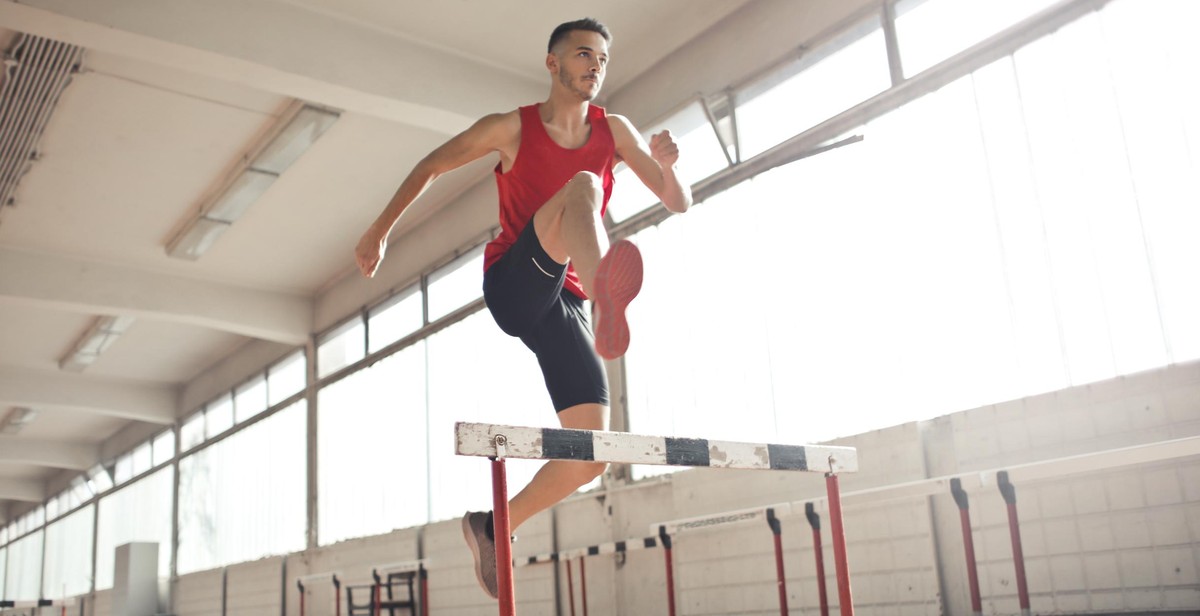How to Train a Buffalo for Draft Work: Teaching Buffaloes to Pull Carts and Implements
If you are looking for a powerful and sturdy animal to help you with your draft work, buffaloes can be an excellent choice. However, training a buffalo for draft work can be a challenging task, especially if you don’t have any prior experience. In this article, I will share my personal experience with training buffaloes for draft work and provide you with some tips and techniques that you can use to teach your buffaloes to pull carts and implements.
My Personal Experience with Training Buffaloes for Draft Work
As a professional farmer and animal trainer, I have worked with buffaloes for many years. Over the years, I have learned that training buffaloes for draft work requires patience, consistency, and a deep understanding of their behavior and instincts.
One of the most important things to keep in mind when training buffaloes is that they are highly intelligent and sensitive animals. They can sense your emotions and react accordingly, so it’s crucial to approach them with kindness, respect, and a positive attitude.
Another essential factor to consider is the selection of the right buffalo for the job. Not all buffaloes are suitable for draft work, and it’s crucial to choose an animal that is strong, healthy, and has a good temperament.
What You’ll Learn in This Article
- The benefits of using buffaloes for draft work
- How to select the right buffalo for the job
- The equipment you’ll need to train your buffalo for draft work
- Step-by-step instructions for teaching your buffalo to pull carts and implements
- Tips and techniques for troubleshooting common issues during the training process
Are you ready to start training your buffalo for draft work? Let’s get started!

Understanding Buffalo Draft Work
Buffalo draft work is a traditional method of transportation and farming that has been used for centuries in various parts of the world. It involves training buffaloes to pull carts and other implements to carry heavy loads, plow fields, and transport goods. The practice is still prevalent in many rural areas, particularly in Asia and Africa, where these animals are highly valued for their strength, endurance, and docile nature.
What is Buffalo Draft Work?
Buffalo draft work is the use of buffaloes as draft animals to perform various tasks that require pulling or carrying heavy loads. These tasks include plowing fields, transporting goods, and pulling carts. The buffaloes are usually harnessed to the carts or implements using a yoke or a collar and chains. The yoke or collar is placed around the neck of the buffalo, and the chains or ropes are attached to the cart or implement.
Why Train Buffaloes for Draft Work?
Training buffaloes for draft work has several advantages. Firstly, buffaloes are strong and can pull heavy loads over long distances. They are also docile animals and can be easily trained to work with humans. Secondly, using buffaloes for draft work is an eco-friendly alternative to using machines that consume fossil fuels and emit harmful pollutants. Thirdly, using buffaloes for draft work helps to preserve traditional farming practices and cultural heritage.
Buffalo draft work requires specific training techniques and equipment to ensure that the animals are comfortable and safe while working. In the next section, we will discuss the steps involved in training a buffalo for draft work.

Preparing for Training
Before you begin training your buffalo for draft work, it is important to select the right buffalo and condition them properly.
Selecting the Right Buffalo for Draft Work
When selecting a buffalo for draft work, it is important to choose one that is physically fit and healthy. Look for a buffalo that is muscular and has a strong build, as they will need to be able to pull heavy loads. Additionally, choose a buffalo that has a calm and docile temperament, as they will need to be comfortable with the training process and working with humans.
It is also important to consider the age and gender of the buffalo. Younger buffaloes may be easier to train, but may not have the strength and endurance needed for heavy draft work. Male buffaloes, or bulls, are typically stronger than female buffaloes, or cows, but may also be more aggressive and difficult to handle.
Conditioning the Buffalo for Draft Work
Before beginning any training, it is important to condition the buffalo for the physical demands of draft work. This can be done through a combination of exercise, diet, and rest.
Start by gradually increasing the amount of exercise your buffalo receives, such as walking or pulling light loads. This will help to build their strength and endurance over time. It is also important to provide your buffalo with a balanced diet that includes plenty of protein and other nutrients to support their physical development.
Finally, make sure your buffalo gets plenty of rest and downtime between training sessions. This will give their muscles time to recover and prevent overexertion or injury.
| Steps | Details |
|---|---|
| Selecting the Right Buffalo for Draft Work | Choose a physically fit and healthy buffalo with a calm temperament; consider age and gender |
| Conditioning the Buffalo for Draft Work | Gradually increase exercise, provide a balanced diet, and allow for plenty of rest and downtime |

Training Techniques for Draft Work with Buffaloes
Teaching the Buffalo to Respond to Commands
Before starting any draft work with buffaloes, it is essential to teach them basic commands such as “stop,” “go,” and “turn.” Start by using a training stick or a whip to gently tap the buffalo’s shoulder or hip and say the command simultaneously. Repeat this process until the buffalo responds correctly to the command.
It is important to be consistent with the commands and to reward the buffalo with treats or praise when they respond correctly. Over time, the buffalo will learn to associate the commands with specific actions and will respond accordingly.
Teaching the Buffalo to Pull Carts and Implements
Once the buffalo has mastered basic commands, it is time to introduce them to pulling carts and implements. Start by attaching a lightweight cart or sled to the buffalo and gradually increase the weight as the buffalo becomes more comfortable with the task.
It is important to ensure that the cart or implement is properly balanced and that the buffalo is not overloaded. Overloading can cause injury to the buffalo and lead to poor performance.
As the buffalo becomes more comfortable with pulling, introduce them to different types of terrain, including hills, slopes, and uneven surfaces. This will help them develop the strength and coordination needed for draft work.
Training the Buffalo to Work in a Team
Buffaloes are social animals and work best in pairs or teams. When training buffaloes to work in a team, it is important to choose animals that are compatible and have similar temperaments.
Start by training each buffalo individually and gradually introduce them to working together. Begin with light loads and simple tasks and gradually increase the difficulty as the team becomes more comfortable working together.
It is important to monitor the buffalo’s behavior and to make adjustments as needed. If one buffalo is struggling or becoming agitated, it may be necessary to separate them and work with them individually before reintroducing them to the team.
| Training Techniques | Description |
|---|---|
| Teaching Commands | Use a training stick or whip to tap the buffalo’s shoulder or hip and say commands such as “stop,” “go,” and “turn.” |
| Pulling Implements | Start with a lightweight cart or sled and gradually increase the weight. Ensure proper balance and avoid overloading the buffalo. |
| Working in a Team | Choose compatible buffaloes and gradually introduce them to working together. Monitor behavior and make adjustments as needed. |

Equipment
Choosing the Right Harness and Cart
When it comes to training a buffalo for draft work, choosing the right harness and cart is crucial. The harness should fit the buffalo properly and be made of strong, durable materials. A poorly fitting harness can cause discomfort and even injury to the buffalo.
There are several types of harnesses available, including breastcollar, collar and hames, and yoke. The type of harness you choose will depend on the size and strength of your buffalo, as well as the type of work you will be doing.
The cart should also be chosen carefully. It should be sturdy and able to withstand the weight of the load being pulled. The size of the cart should be appropriate for the size and strength of your buffalo.
Types of Carts
- Two-wheeled carts
- Four-wheeled carts
- Garden carts
Maintaining and Repairing Equipment
Maintaining and repairing your harness and cart is important to ensure the safety of your buffalo and yourself. Regularly inspect your equipment for wear and tear, and replace any damaged or worn parts.
Keep your harness and cart clean and dry when not in use. Store them in a dry, cool place to prevent mold and mildew.
If you need to repair your equipment, make sure to use high-quality materials and follow the manufacturer’s instructions. If you are unsure how to make a repair, seek the advice of a professional.
| Equipment | Maintenance | Repair |
|---|---|---|
| Harness | Regular inspection for wear and tear, cleaning and drying when not in use, proper storage | Replacement of damaged or worn parts, use of high-quality materials, following manufacturer’s instructions |
| Cart | Regular inspection for wear and tear, cleaning and drying when not in use, proper storage | Replacement of damaged or worn parts, use of high-quality materials, following manufacturer’s instructions |

Conclusion
Teaching buffaloes to pull carts and implements for draft work is a rewarding experience for both the animal and the handler. Not only does it provide a sustainable and eco-friendly alternative to using machines, but it also strengthens the bond between the animal and the handler.
The Benefits of Training Buffaloes for Draft Work
- Cost-effective and eco-friendly alternative to machines
- Strengthens bond between animal and handler
- Provides exercise and mental stimulation for the animal
- Buffaloes are strong and capable of pulling heavy loads
When training buffaloes for draft work, it is important to remember to be patient, consistent, and always use positive reinforcement. By starting with basic commands and gradually increasing the difficulty of the tasks, buffaloes can become skilled and reliable draft animals.
Overall, training buffaloes for draft work is a sustainable and fulfilling practice that has many benefits for both the animal and the handler. By incorporating these methods into your agricultural practices, you can create a more harmonious and eco-friendly relationship with the natural world.
